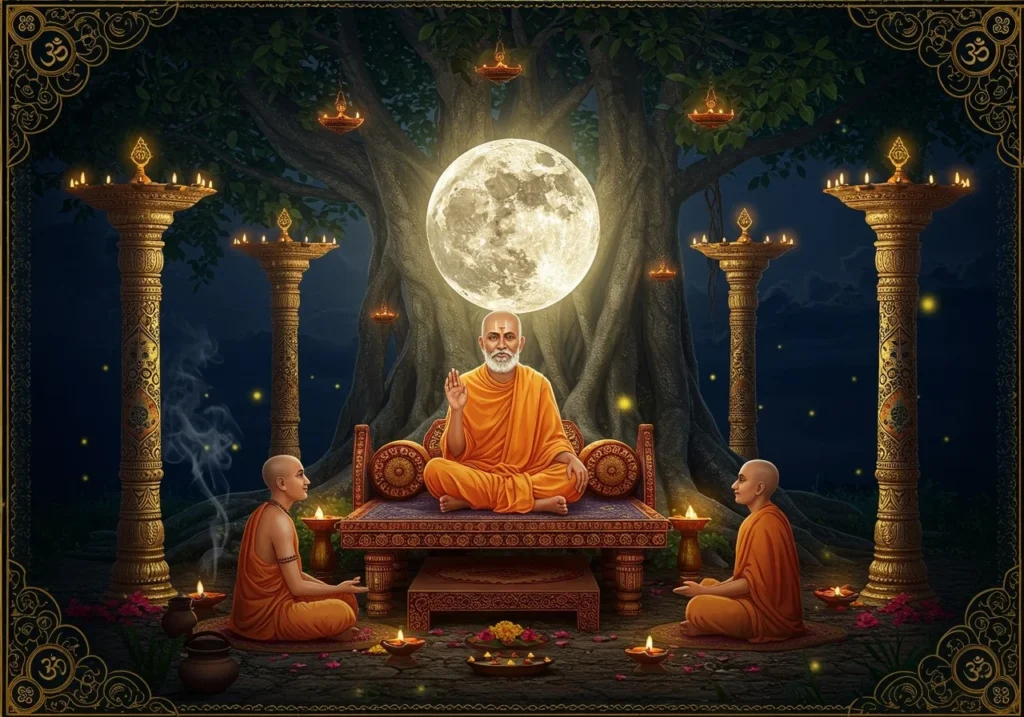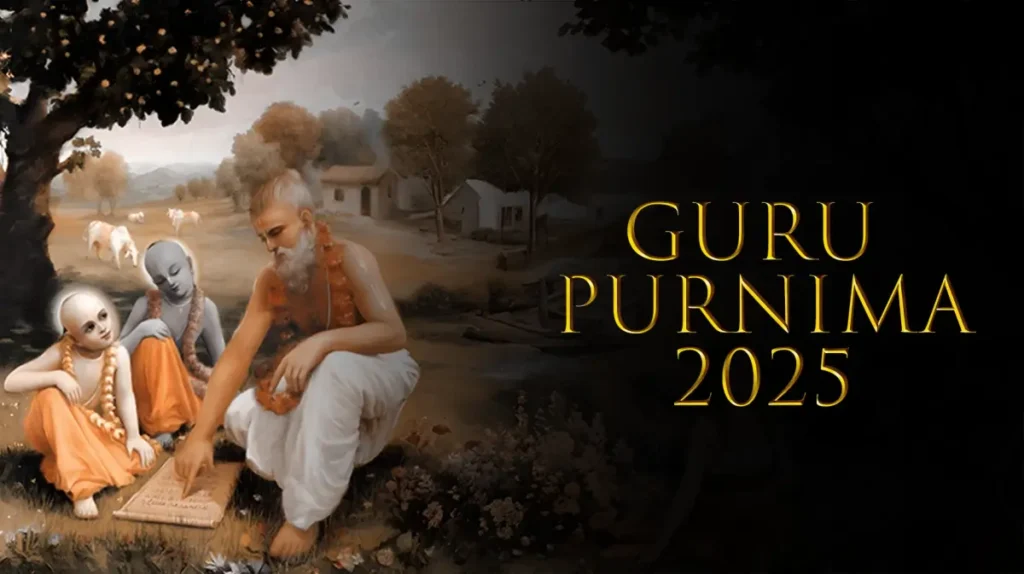Introduction
The word Guru is derived from the Sanskrit syllables “Gu” meaning darkness and “Ru” meaning remover. Thus, a Guru is “one who removes darkness.” The darkness here signifies ignorance, ego, fear, and material illusion. The guru does not merely teach but awakens—guiding the student (shishya) towards truth, wisdom, and self-realization.
In the Indian tradition, a guru is placed on a pedestal even higher than God. As the popular Sanskrit shloka says:
“Guru Brahma Guru Vishnu Guru Devo Maheshwara,
Guru Sakshat Parabrahma Tasmai Shri Gurave Namah”
—Meaning: The Guru is Brahma (the creator), Vishnu (the preserver), and Maheshwara (Shiva, the destroyer). The Guru is the Supreme Absolute. I offer my salutations to such a Guru.
The Historical and Spiritual Significance
1. Vedic Tradition and Maharishi Vyasa
Guru Purnima is traditionally associated with Maharishi Ved Vyasa, the legendary sage and author of the Mahabharata, who is also credited with compiling the four Vedas. It is believed that on this day, Sage Vyasa was born and also completed the Brahma Sutras. In honor of his monumental contributions to Indian philosophy and literature, the day is also known as Vyasa Purnima.
Students, saints, and scholars pay homage to Vyasa and all spiritual gurus on this day, acknowledging their role in preserving the lineage of dharma (righteousness) and knowledge.
2. Buddhist Significance: Lord Buddha’s First Sermon
For Buddhists, Guru Purnima is the day when Gautama Buddha gave his first sermon at Sarnath, Uttar Pradesh, after attaining enlightenment. He delivered the Dhammacakkappavattana Sutta (Turning the Wheel of Dharma), thus initiating his disciples into the monastic Sangha. Hence, for Buddhists, this day symbolizes the birth of Buddhism as a teaching tradition.
3. Jain Tradition
In Jainism, Guru Purnima marks the day when Lord Mahavira, the 24th Tirthankara, appointed his first disciple, Indrabhuti Gautam, thereby establishing the Jain monastic order. It’s an occasion for Jains to remember their lineage of Acharyas and Tirthankaras.

Cultural Practices Across India
Guru Purnima is observed with various rituals and customs that reflect the diversity and unity of India’s spiritual fabric.
1. In Ashrams and Spiritual Centres
Disciples gather in ashrams to offer prayers and gifts to their spiritual teachers. They often participate in satsangs (spiritual gatherings), recitations of scriptures, and meditation sessions. The bond between guru and disciple is renewed and celebrated.
2. In Schools and Colleges
Though modern education often lacks the deep spiritual teacher-student bond of ancient gurukuls, many educational institutions in India organize special assemblies and events to honor teachers, acknowledging their contribution to shaping young minds.
3. Fasting and Charity
Some devotees observe a day-long fast, offer seva (selfless service), and donate to charitable causes. Fasting on Guru Purnima is believed to cleanse both the body and the mind, making one more receptive to spiritual guidance.

The Guru-Shishya Parampara: A Timeless Legacy
India’s spiritual tradition thrives on the Guru-Shishya Parampara, a lineage where knowledge is passed down through oral transmission and lived experience. Unlike transactional education, this relationship is sacred and personal. The shishya (disciple) serves the guru with utmost devotion and humility, and in return receives not just knowledge, but jnana (wisdom), bhakti (devotion), and moksha (liberation).
Notable examples include:
- Krishna and Arjuna – On the battlefield of Kurukshetra, Lord Krishna became Arjuna’s guru, delivering the immortal Bhagavad Gita.
- Ramakrishna Paramahamsa and Swami Vivekananda – The powerful bond that led to the spiritual awakening of Vivekananda, who carried India’s spiritual message to the West.
- Chanakya and Chandragupta Maurya – A guru who shaped a warrior into a great emperor.
Relevance in the Modern World
In today’s fast-paced, digitally connected, but spiritually disconnected world, Guru Purnima offers a moment to pause and reflect. The reverence for gurus is not just about tradition—it’s about acknowledging those who guide us toward higher purpose, inner peace, and authentic living.
1. Teachers as Life-Changers
In every domain—academic, spiritual, artistic, or professional—mentors play a pivotal role. From schoolteachers who inspire confidence to life coaches and therapists who help navigate mental well-being, our modern-day gurus come in many forms.
Guru Purnima reminds us to honor their role and express gratitude—not just with words, but with action, sincerity, and continued learning.
2. Inner Guru – The Wisdom Within
The ancient texts also speak of the antar-guru—the inner guru or the conscience. In an age of information overload, reconnecting with our inner guide becomes essential. Silence, meditation, and reflection help awaken this wisdom.
How to Celebrate Guru Purnima Meaningfully
Here are some ways one can observe Guru Purnima with sincerity:
- Express Gratitude: Reach out to your teachers or mentors. A heartfelt message or small gesture goes a long way.
- Read Sacred Texts: Dive into spiritual literature like the Bhagavad Gita, Dhammapada, or Upanishads.
- Meditate: Spend time in introspection to connect with the inner guide.
- Serve a Cause: Honor your guru by offering service—whether it’s volunteering, teaching someone in need, or donating to educational causes.
- Attend a Satsang: Join spiritual gatherings or listen to teachings from masters, live or online.
Conclusion
Guru Purnima is more than a festival—it’s a call to honor wisdom, surrender ego, and walk the path of learning with humility. In a world chasing noise and novelty, the voice of a true guru offers timeless clarity.
Let us not confine Guru Purnima to ritual alone. Let it inspire us to become better seekers, better students, and, eventually, guides for others. After all, the greatest tribute to a guru is not just reverence—but transformation.




